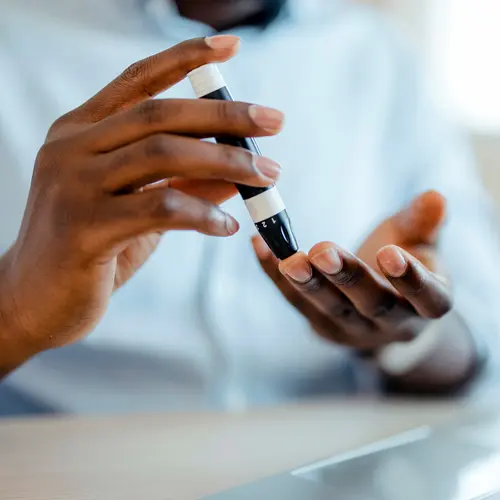Aug. 27, 2024 – People with type 2 diabetes can now wear a device that will automatically deliver doses of insulin, following an expanded approval by the FDA on Monday.
Called the Omnipod 5, it is the first to be approved for adults with type 2 diabetes and can be worn continuously for up to 3 days, working with a continuous glucose monitor.
Taking insulin to help manage blood sugar levels is among the treatment options for the nearly 1 in 10 U.S. adults who have type 2 diabetes, although many people manage the condition through lifestyle changes like diet and exercise or by taking other medications.
Undermanaged type 2 diabetes can result in serious complications like heart attacks, vision and kidney problems, or a hyperosmolar hyperglycemic state (HHS), which is when very high blood sugar levels lead to mental changes like confusion or hallucinations and potentially loss of consciousness.
For people with type 2 diabetes, current ways to give themselves insulin are with a syringe, with a pen, or with a pump, all of which require frequent blood sugar checks.
Automatic insulin delivery (AID) systems have previously only been approved for use by people with type 1 diabetes, although they have been prescribed off-label by some doctors to type 2 diabetes patients. Type 1 diabetes is considered an autoimmune condition and is much less common than type 2 diabetes. With type 1, the body stops making insulin. With type 2, the body can’t use insulin well.
“I’ve seen first-hand how difficult it is for patients to reach their targets with injections,” Anne L. Peters, MD, director of the University of Southern California Westside Center for Diabetes, said in a news release. “Omnipod 5 makes it easier for people with type 2 diabetes to take their insulin and stay in range, leading to remarkable improvements in clinical outcomes and overall quality of life. I believe this innovative technology has the potential to transform the lives of insulin-requiring people with type 2 diabetes.”
While the newly approved automatic system may be a simpler alternative to self-administered options, it does require important set-up steps and patient education.
“I've seen patients whose primary care physicians have sent the Omnipod prescription to the pharmacy without any real knowledge of the system or next step plan. … You really need guidance, especially patients who have never done premeal insulin dosing,” said Marie E. McDonnell, MD, director of the diabetes program at Brigham and Women's Hospital in Boston.
In its approval announcement, the FDA cited data from a study of 289 adults with type 2 diabetes who used the Omnipod 5 for 13 weeks and had improved blood sugar control without complications or serious adverse events, although some people in the study had hyperglycemia (high blood sugar), hypoglycemia (low blood sugar), and skin irritation.
The device’s maker, Insulet, said in a news release that the device is already widely covered by many insurance plans, including Medicare Part D.
Miriam E. Tucker of Medscape Medical News contributed to this article.
